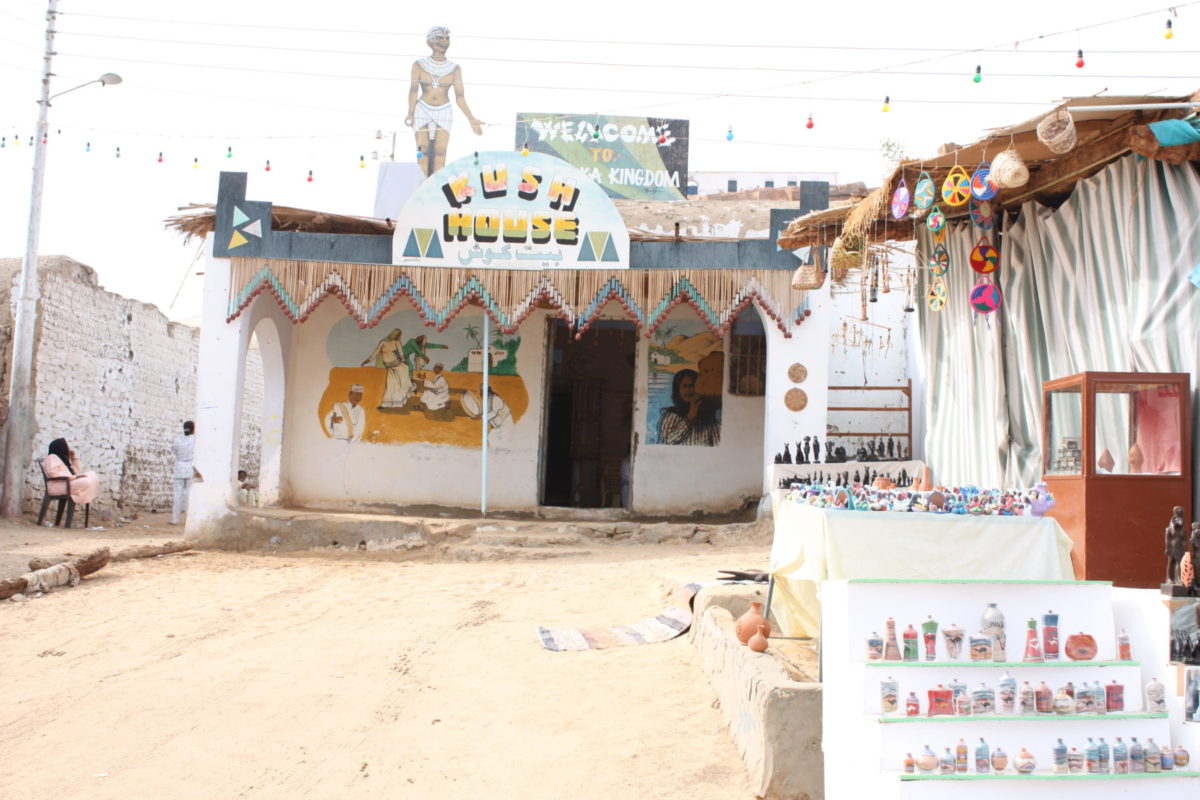Nubian culture and heritage in Egypt

There are a number of traditional Nubian villages in and around Aswan, on both the islands and the banks of the River Nile (see above). These settlements and communities have been one of the few cultural sites in Egypt that have openly recognised the region’s connection to indigenous African cultures. In order to preserve the peace and tranquility of these long-standing communities, the Elders and the then Director of the Nubia Museum in Aswan decided to designate a site as the official heritage village for tourists.

Celebrating Nubian culture
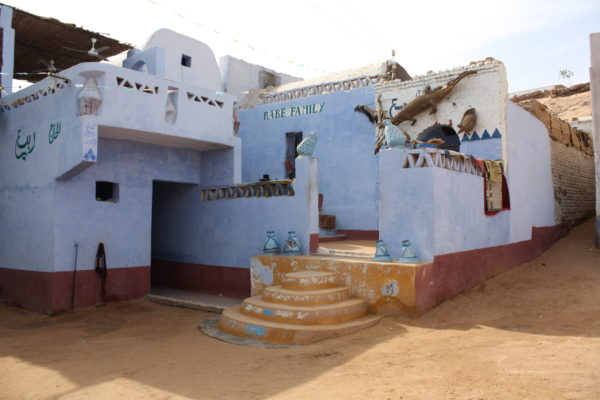
The traditional houses are decorated in bright colours and with items that are relevant to traditional Nubian culture. On one example that was built by the Rabe family (above), even the water pots are painted to match the exterior of the houses.
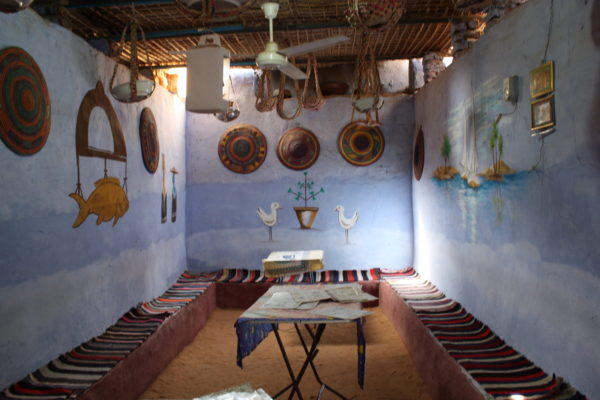
Inside, traditional Nubian basketry decorates the walls, accompanied by symbols of foliage, fish and representations of the River Nile. Such symbols have been used as decorative and protective motifs in this regions for thousands of years. In ancient Kemet fish were often depicted in tomb scenes where the deceased hunted for food. Depictions of plants associated with river Nile often appear on Kemite temples as offerings (below) or as a reference to the annual inundation (flood) and the fertility of the Black Land.
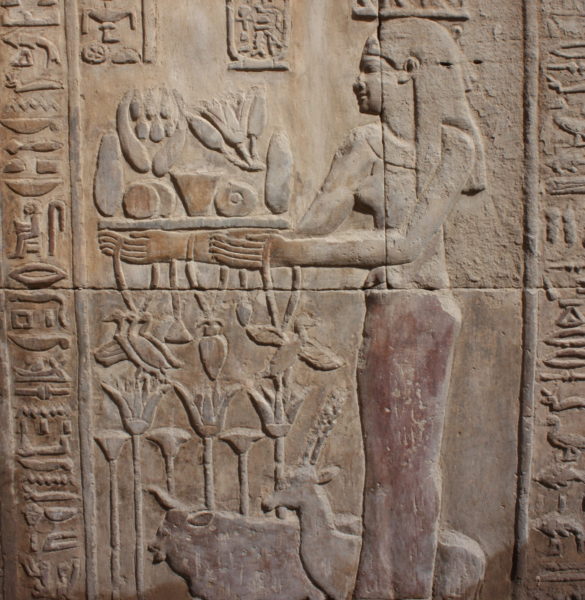
Continuing traditions?
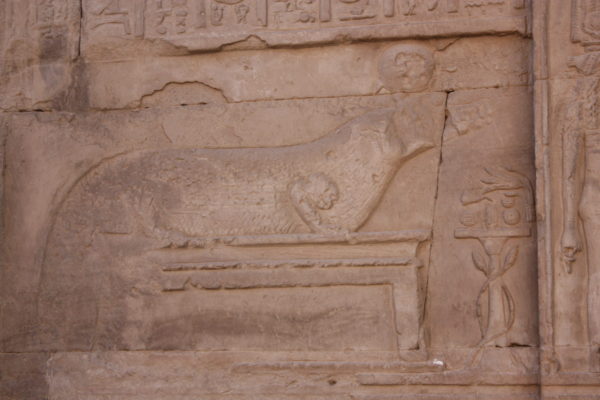
The Kemite god Sobek was represented as a crocodile (see above). In his interview Dr Abdel Meguid talked about working at the Temple of Sobek at Kom Ombo and the importance of this experience in him becoming an archaeologist and museum professional.
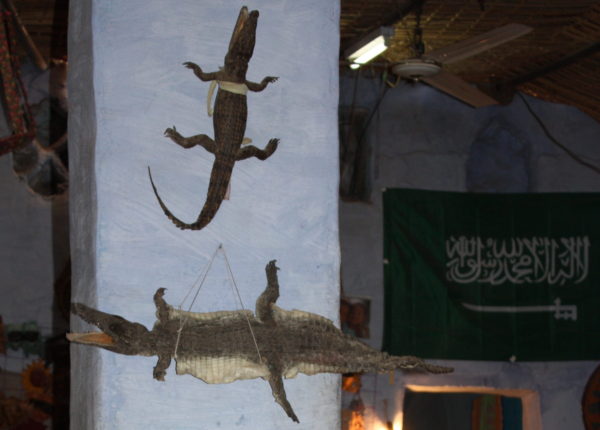
Many traditional Nubian homes are decorated with crocodiles (see above) and in the case of the Rabe family home, there was even a live crocodile in a cage in the main room! Although this is largely done for the benefit of tourism, the representation of this animal is nonetheless a tradition that goes back thousands of years. When Herodotus, the Greek historian, visited Kemet he talked about being confused that the Egyptians, as he called them, on the one hand worshipped crocodiles but on the other they ate them.
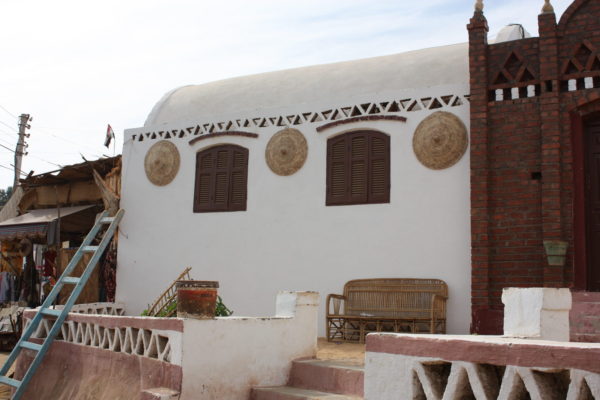
Basketry is also a traditional craft in this region and indeed in many other parts of Africa. Nubian baskets are made from locally sourced materials, such as reeds from the river Nile and are effectively no different to examples that are 3000 years old. Baskets are used to cover food, serve food and also store food. On the photograph below you see traditional spiced Nubian coffee being made on an open fire. A flat basket was used to grind the coffee and cardamon pods before placing them into a small container with water to boil.
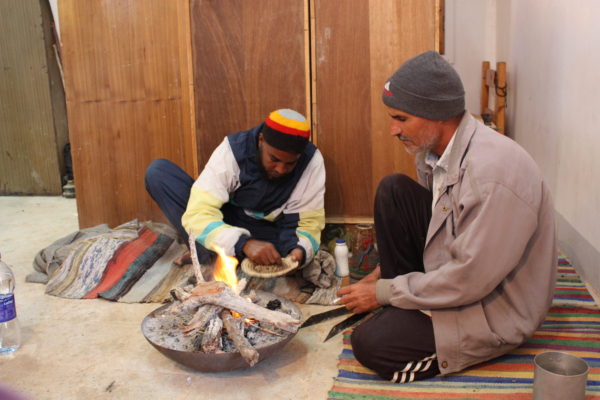
Museums and communities working together
In 2011 I interviewed the then Director of the Nubia Museum, Dr Ossama Abdel Meguid. He shared his own experiences, as a person of Nubian heritage, of interacting with the Kemite past. Dr Abdel Meguid has worked tirelessly to preserve Nubian heritage and to connect it to the past. I have certainly learned an enormous amount from him, both in terms of understanding Nubian culture and how we should present indigenous cultures in museums. In the interview he talks about the importance of consulting with Nubian communities directly about how they wanted their heritage to be presented. He also explains how the Nubian people have lived in this region for the past 10,000 years and how Kemite culture came from the south. He also talks about the negative impact of the Aswan Dams on Nubian culture and heritage. In fact it was a conversation with Dr Abdel Meguid that inspired an earlier post.
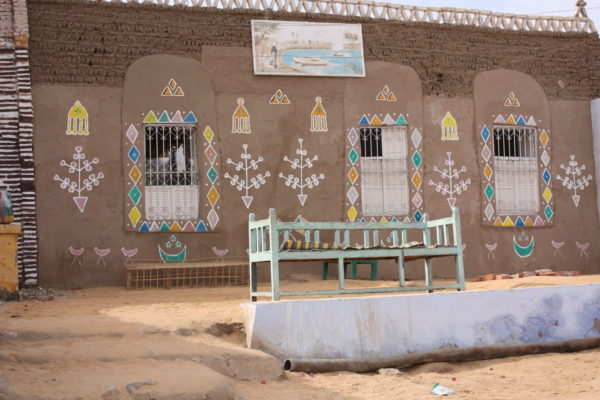
I asked Dr Abdel Meguid why the tradition of decorating Nubian houses (above) appeared to be dying out, and he explained that since being moved after the building of the Dams, many people feel disconnected from their heritage and their past. This observation makes projects such as the Nubian Heritage Village even more relevant. Such initiatives help to preserve the past, and present, for the future.

